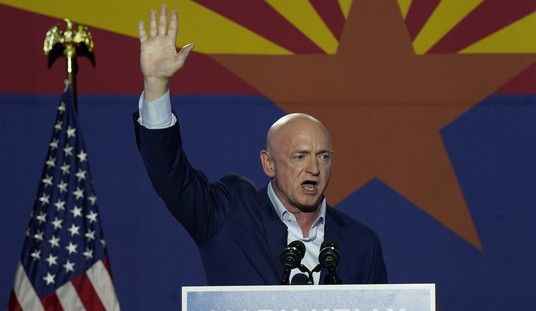Now that there’s been time to dig through all of the data from this year’s presidential race, analysts are teasing out all of the little factoids that campaign strategists agonize over every four years. One of the most obvious misses by the pollsters was the fact that the anticipated “blue wave” almost entirely failed to appear. This result should be obvious from the Democrats’ losses in the House and their failure to authoritatively take the Senate majority.
But another prediction made on a regular basis also landed with a thud. We were told repeatedly that 2020 was going to be “the year of the women,” and they would decisively break for Biden while abandoning Donald Trump in droves. The numbers are in, however, and the picture they paint is almost a duplicate of 2016. Female voters did break in Biden’s favor while the male vote went to Trump, but the ladies went for Biden as almost the exact same percentage as they did for Hillary Clinton. The “Women for Trump” vote was real and they held the line just as they did four years ago. (Associated Press)
Trump had a modest advantage among white women, and a much wider share of white women without college degrees, according to AP VoteCast, a survey of more than 110,000 voters. And despite expectations that the much-analyzed gender gap would expand, it remained essentially the same from previous elections, including 2016…
AP VoteCast showed a 9 percentage point difference between men and women in support for Biden and Harris: 55% of women and 46% of men. That was essentially unchanged from the 2018 midterms, when VoteCast found a 10-point gender gap, with 58% of women and 48% of men backing Democrats in congressional races.
Contrary to some expectations, “this was a very average gender gap,” says Susan J. Carroll, professor of political science and women’s and gender studies at Rutgers.
In other words, Biden saw a 1% gain among women voters as compared to how Democrats did in the 2018 midterms and the 2016 presidential race, as well as a 2% gain among men. That’s inside the margin of error for any set of predictions. But it looks like that tiny percentage was just enough to take several swing states that Trump narrowly carried four years ago and flip them back into the blue column by similar slim margins. It was another very close race in the states and counties that mattered the most in terms of the electoral college, but the final numbers (if they are to be believed) fell the other way this time.
One reason I’d still put a caveat on how convincing the final numbers may be for many people is the other statistic pointed out in the AP’s analysis. It was highlighted this morning in a tweet from Kaya Jones.
Like I said…. No one votes all RED down ballot and then jumps to vote for a BLUE President. This is the live House map 2020. I’ll go a step further and say I actually think Trump not own the electoral vote he also won the popular!
I stand by my prediction. #RedTsunami 😎🇺🇸 pic.twitter.com/9jl1baNPeD— Kaya Jones (@KayaJones) November 16, 2020
I wouldn’t jump out on a limb and go so far as to say Trump won the popular vote, but the performance of Republicans further down on the ballot – particularly Republican women – was impressive. The voters sent a lof of GOP women to Washington this year and made overall gains in the House that almost robbed Nancy Pelosi of her gavel. So if that’s the case, how did Trump lose? Well, ticket-splitting does happen in real life, but that sounds like an awful lot of split tickets, doesn’t it?
In any event, the counting continues. Believe it or not, we still have some House races that haven’t been called yet and the Republicans may yet flip a few more seats from Blue to Red. Stay tuned.







Join the conversation as a VIP Member